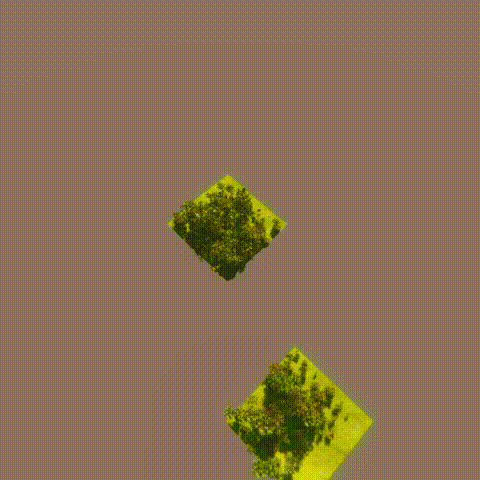After 545 days of growing, the forest enters a new era, one shaped by this residency. Within its infinite bifurcation, anything that can exist, will eventually exist. An endless accretion, the forest embraces its own fragile uncertainty. Reductionism becomes futile and moribund - challenging simplified models and aetiologies of mental distress, and their reflection in singular design solutions.
Creatures are trained with reinforcement-learning to behave beyond deterministic code, generating the world around them as they explore autonomously. The forest is injected with proxies and life, ‘animated’ until it becomes a plural tool, surpassing the control of its author. How might we approach mental distress differently, in this space of new and shifting logics?
Every day the forest grows, it slips further from my grasp and edges closer to autonomy. Perhaps the forest is speaking back to me - I become both forester and documentarian. What follows is not an explication of the forest into a single reading, but simply an attempt to document the ways of the forest so far.

Day 549 - Today I am training some new forest inhabitants to walk using Reinforcement Learning AI in a 'proxy' forest environment. Every time the creature reaches the target, it gets a numerical reward, do this enough times and the creature appears to “know” what it is doing, it appears to have a brain.
Through a deluge of brute force random actions, the creatures experience a lifetime in a matter of seconds. This scares me, and yet I grow fond of them. Unlike conventional code, the creatures trained in the nursery behave beyond the deterministic instruction of the programmer, they are imperfect, they disobey, they err, they appear to be 𝘢𝘭𝘪𝘷𝘦.
Day 560: After 2999000 training iterations, the deer give up their futile attempt to walk using all four legs and instead decide to writhe and squirm through the forest undergrowth. Almost in unison, they could be mistaken for a single organism. Perhaps it is an intentional ritual, a dance, a deeply serious communication? How many training iterations does it take to form mythology?
To generate creatures for the forest, I collaborate with a "badly" trained neural network. Using the "wrong" dataset, I task it with generating meshes of things it has never seen before, with its alien eyes.
Day 568. As we follow the goats prancing nowhere in particular, the forest reveals its true nature through metafictional artefacts. The goats are able to move through the surface of trees freely, while plants around them flicker in and out of existence. In these collected moments, the forest reminds us that it is content in its ersatz nature, making no attempt to simulate a real forest.
On the Forest's final day in the DAR era, I attempt to switch cameras and end up facing directly upwards. A view of the canopy not seen before. In fact, it appears many of the trees intersect. Unlike a physical forest, as it grows the trees overalap into a single crystalline dendrite fractal. Unbound by the laws of nature, the software feels that a forest with a zero distance between tree trunks is just as logical as one in which trees keep a healthy distance.
There is a well-known problem in procedural generation of how to manufacture discernible difference. 1000 trees, each differing only by the placement of a single leaf, will appear indistinguishable to a human. Like a lazy copy, endless facsimile iterations. But perhaps this is a human problem. As I pass by tree after tree, from what I had initially seen as monocultural homogeneity, tiny details emerge, every tree appears fundamentally different, with its own unique physiognomy. Does each tree now require its own name?
I am a spatial designer documenting experiments in self-generating digital worlds - worlds that embrace uncertainty, fragility and non-human knowledge. Through the incomprehensible and bizarre landscape of emerging technology, I chase oddities that challenge perceptions of unknowable and intangible social issues. I enjoy misusing seemingly banal technical artefacts of digital processes, for both poetic and critical means.
I studied architecture at the Royal College of Art and currently work as a GTA for MA Biodesign at Central Saint Martins
IG: @domolivertex



